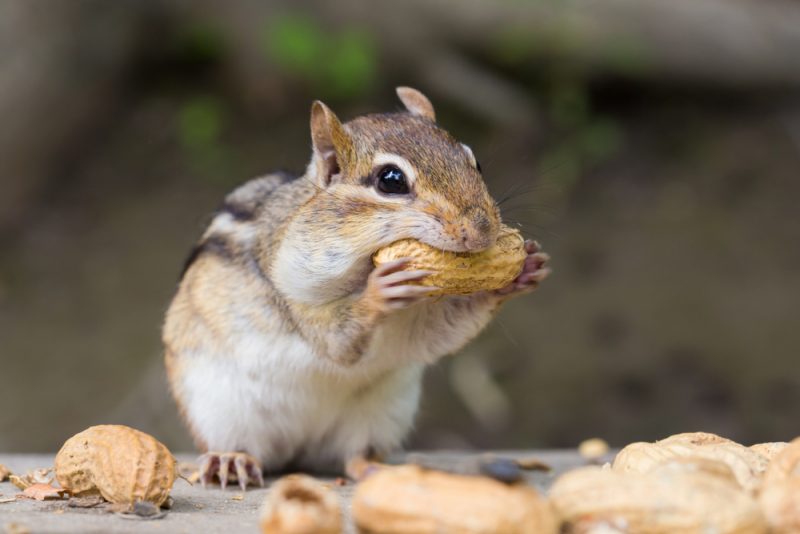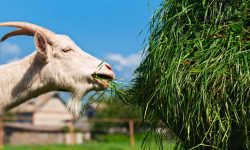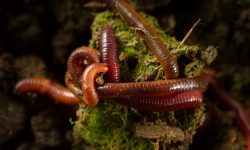Chipmunks are among the most charming and energetic small mammals in the animal kingdom. With their striped backs, cheek pouches, and endless curiosity, they bring life to forests, backyards, and parks across North America and parts of Asia. But have you ever wondered what fuels these tiny bundles of energy?
Unlike mice or squirrels, chipmunks are omnivorous foragers — meaning they eat both plants and small animal matter. Their diet is diverse, seasonal, and highly adaptable to their environment. From seeds and nuts to insects and fruits, chipmunks consume whatever is available, storing food in underground burrows for the colder months.
In this article, we’ll explore 20 foods chipmunks love the most, showing what keeps these busy little rodents strong, alert, and ready for every adventure in the wild.
Understanding the Chipmunk Diet

Chipmunks: Omnivorous and Opportunistic
Chipmunks have a wide-ranging diet that includes seeds, nuts, fruits, grains, fungi, insects, and small vertebrates. Their feeding habits change with the seasons — they feast during summer and fall to build fat reserves and stash food for winter.
Unlike purely herbivorous animals, chipmunks gain extra nutrients from insects and occasionally small amphibians or bird eggs. This flexibility makes them highly successful survivors in forests, meadows, and suburban gardens.
How Chipmunks Store Food
One of the chipmunk’s most remarkable behaviors is food storage. Using their expandable cheek pouches, they carry seeds and nuts to hidden chambers underground, creating food caches for winter survival.
Each chipmunk can store thousands of seeds and acorns, meticulously organizing them by type. These “pantries” are vital since chipmunks do not hibernate continuously — they wake periodically during winter to eat from their stores.
Seasonal Eating Habits
In spring and summer, chipmunks eat more insects, fruits, and tender greens. As autumn approaches, they focus on collecting calorie-dense foods like nuts and seeds. In winter, their diet depends entirely on what they have stored.
Their diet balance ensures energy for daily activity, warmth, and reproduction, helping them thrive in diverse environments year-round.
20 Foods Chipmunks Love the Most
1. Acorns
Acorns are one of the most important foods for chipmunks, especially in autumn. They’re rich in fats, proteins, and carbohydrates that provide long-lasting energy through the cold months.
Chipmunks gather and store acorns underground, often sorting them by ripeness to prevent spoilage. They prefer acorns from oak species like white oak, which contain fewer tannins and taste less bitter.
This seasonal hoarding behavior helps chipmunks survive long winters when other food sources are unavailable.
2. Seeds
Seeds are a year-round staple in the chipmunk’s diet. They come from grasses, flowers, and trees, offering vital nutrients such as oils, fats, and proteins.
Chipmunks collect seeds daily, storing them in their cheek pouches and burying them in hidden caches. Small seeds from sunflowers, pine cones, or maple trees are particular favorites.
Because of their seed-hoarding habits, chipmunks play an essential ecological role — helping forests regenerate by dispersing seeds across the landscape.
3. Nuts
Nuts like walnuts, hickory nuts, and hazelnuts are prized treasures for chipmunks. They are energy-dense and loaded with fats that sustain chipmunks through winter torpor.
Using their strong teeth, chipmunks crack open shells to reach the nutritious kernels inside. They’re incredibly efficient foragers, often collecting hundreds of nuts in a single day.
In captivity or backyard environments, unsalted nuts can be offered occasionally, but moderation is key due to their high fat content.
4. Fruits
Chipmunks enjoy a variety of fruits such as berries, apples, cherries, and grapes. These provide natural sugars, vitamins, and hydration — especially during warmer months.
In the wild, they feast on wild berries and fallen fruits, spreading seeds that help new plants grow. Their sharp sense of smell helps them locate ripened fruit easily.
While fruit is a small part of their overall diet, it offers an important boost of energy and moisture when water is scarce.
5. Grains
Grains like corn, oats, wheat, and barley are commonly eaten by chipmunks in farmlands and backyards. These foods are high in carbohydrates and help maintain their high activity levels.
Wild chipmunks often steal grains from bird feeders or barns, tucking them into their cheek pouches for later.
Because grains digest quickly, they serve as a short-term energy source, complementing the long-term nutrition from nuts and seeds.
6. Insects
Chipmunks are not strictly vegetarians — they consume insects like beetles, crickets, and caterpillars when available. These small prey provide essential protein and fats that are crucial during the breeding season.
By eating insects, chipmunks also help control pest populations in their ecosystems. This behavior increases during spring and summer when insect activity is highest.
The extra protein from insects supports muscle growth, fur development, and the demands of raising young.
7. Mushrooms and Fungi
Fungi are another important food source for chipmunks, especially in forested regions. They consume mushrooms, truffles, and other types of wild fungi found near tree roots.
Mushrooms provide trace minerals, moisture, and natural compounds that aid digestion. Chipmunks also help spread fungal spores, benefiting forest ecosystems.
In some areas, they’re known to store dried mushrooms in their burrows, ensuring a future food supply.
8. Green Leaves and Shoots
In early spring, chipmunks eat tender green shoots and leaves to replenish nutrients after the winter months. These fresh plants provide vitamins and hydration.
They particularly enjoy young grasses, dandelion leaves, and clover. These are easy to digest and abundant in the wild.
As summer progresses, they shift to seeds and fruits, but green vegetation remains a small yet vital part of their balanced diet.
9. Tree Bark
During harsh winters when food is scarce, chipmunks sometimes gnaw on soft tree bark. This behavior keeps their ever-growing teeth filed down while providing small amounts of fiber and nutrients.
Bark from trees like willow or maple contains trace minerals and natural sugars that help sustain them temporarily.
While not their preferred food, bark serves as an emergency source of nourishment during food shortages.
10. Bird Eggs
Chipmunks occasionally raid bird nests to eat eggs or hatchlings. Though this behavior is rare, it provides a significant protein boost.
They target ground-nesting birds or low tree nests, using their agility to climb branches quietly.
This opportunistic feeding helps them survive in times when insects or plant foods are limited, though it’s a small fraction of their diet.
11. Small Frogs and Tadpoles
Chipmunks sometimes consume tiny frogs, tadpoles, or lizards when near water sources. These small animals provide protein and moisture.
This opportunistic behavior occurs mostly in humid environments during the rainy season. It’s a sign of how flexible and adaptive chipmunks are in finding nutrition.
While rare, such animal-based foods give chipmunks the extra nutrients needed for growth and energy.
12. Pine Cones
Chipmunks are adept at harvesting pine cones, extracting the seeds inside. These seeds, or pine nuts, are packed with fats and calories essential for energy.
They use their sharp teeth to pry open cones and store the seeds underground. Pine cones are especially valuable in autumn when other seeds become scarce.
By caching pine seeds, chipmunks contribute to forest regeneration — an ecological benefit that keeps pine forests thriving.
13. Clover
Clover is a natural favorite for chipmunks. Its leaves and blossoms are soft, slightly sweet, and packed with protein and fiber.
They often graze on clover patches in meadows or lawns, especially in the morning when dew makes the leaves tender.
Clover provides both nutrition and hydration, making it a reliable food for chipmunks throughout spring and summer.
14. Peanuts
Peanuts, though not naturally found in the wild, are a popular treat for chipmunks in human environments. They’re high in fats and protein, offering quick energy.
In backyards, chipmunks eagerly gather unsalted, raw peanuts, often carrying them to their burrows for storage.
However, peanuts should only be an occasional snack, as too many can cause dietary imbalance in captive or urban chipmunks.
15. Corn
Corn is one of the most common foods found in agricultural areas and backyard feeders. Chipmunks eat both kernels and husks, gaining carbohydrates for energy.
They often collect cracked corn or leftover grain from feeding stations meant for birds.
In moderation, corn provides valuable calories, but in large amounts, it can lead to excess fat — so variety is always key.
16. Sunflower Seeds
Sunflower seeds are among chipmunks’ absolute favorites. They’re loaded with oils, protein, and healthy fats that keep these little mammals active and agile.
Many chipmunks are frequent visitors to backyard feeders stocked with black oil sunflower seeds, which are easy to crack and store.
Because of their richness, sunflower seeds are best as a treat rather than a staple, complementing their natural mix of nuts and grains.
17. Apples
Apples are a refreshing, juicy food for chipmunks, especially in late summer and fall. They provide vitamins A and C along with hydration.
In the wild, chipmunks often nibble on fallen apples or carry small pieces back to their burrows. Their sharp teeth allow them to eat the flesh while avoiding the core.
Apples offer natural sweetness and moisture but should be given sparingly in captivity due to their sugar content.
18. Berries
Wild berries like blackberries, raspberries, and blueberries are key seasonal foods for chipmunks. They’re nutrient-rich and filled with antioxidants.
Chipmunks consume berries directly from shrubs, spreading seeds in their droppings, which aids in forest regeneration.
The juicy texture provides hydration, and the bright colors attract their attention — a perfect summer treat that combines taste and nourishment.
19. Flowers and Petals
Chipmunks occasionally nibble on flower petals and buds, especially those of dandelions, clover, or sunflowers. These soft plant parts contain small amounts of sugars and nutrients.
They may eat flowers more frequently in spring when young blooms are abundant.
While not a major food source, petals add variety and trace nutrition to their seasonal diet.
20. Roots and Bulbs
Roots, tubers, and plant bulbs form another backup food source for chipmunks, especially when above-ground vegetation is limited.
They dig into the soil using their small but strong paws to unearth roots like dandelions and bulbs such as tulips.
These underground foods are high in starch and minerals, offering slow-release energy that helps chipmunks through tough seasons.
Frequently Asked Questions (FAQs)
Do chipmunks eat meat?
Yes — but only occasionally. Chipmunks are omnivores and may eat insects, eggs, or small amphibians for extra protein. However, most of their diet is plant-based.
What do chipmunks eat in winter?
In winter, chipmunks rely on stored food like nuts, seeds, and grains kept in underground burrows. They wake periodically to eat rather than fully hibernating.
Can I feed chipmunks in my yard?
Yes! Offer unsalted nuts, sunflower seeds, or small fruits in shallow dishes. Avoid processed foods, chocolate, or salted snacks.
How do chipmunks help the environment?
Chipmunks are natural seed dispersers. By burying nuts and seeds, they help new plants grow and support healthy forest regeneration.
What foods are unsafe for chipmunks?
Avoid feeding them sugary snacks, processed grains, or salty nuts. Also, never give moldy food or bread — it can cause illness.
Conclusion
Chipmunks may be small, but their diet is impressively diverse and perfectly adapted to their environment. From acorns and seeds to fruits, insects, and fungi, every item they consume serves a purpose — fueling their boundless energy and preparing them for the changing seasons.
Their food storage habits not only ensure survival through the winter but also make them vital contributors to forest regeneration and soil health.
Whether they’re foraging through fallen leaves or filling their cheek pouches for the next big meal, chipmunks remind us how even the tiniest creatures play an important role in nature’s cycle. Their varied, well-balanced diet keeps them among the most resilient and resourceful rodents on Earth.






